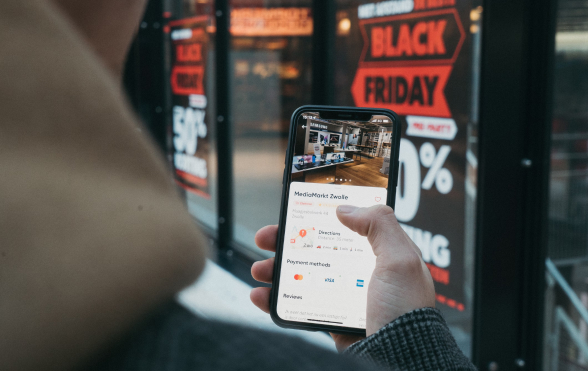Adobe Experience Platform (AEP) is an advanced customer experience management solution that enables businesses to deliver individualized customer service at every touchpoint. In this article, we explore the core components and capabilities of the Adobe digital experience platform. We also look at key use cases that show how AEP Adobe solutions can help businesses optimize their marketing efforts and create personalized messages at every step of the customer journey.
What is Adobe Experience Platform: Components, Features, and Use Cases
With AEP, companies can collect and unify data from multiple sources. Whether a customer is browsing your website, shopping in your store, or interacting with your brand on social media, AEP can bring all that information together into a single view.
Building Blocks of Adobe Experience Platform
Adobe Experience Platform offers a few applications that create a backbone of Adobe Experience Cloud. They provide data architecture that allows businesses to collect, process, unify, and activate customer data in real-time. Below, we have a closer look at each of these components.

Adobe Real-Time Customer Data Platform (Real-Time CDP)
Real-Time CDP is a tool that can pull together all the data about your customers — from emails, social media, mobile apps, and more. This way, businesses can get a 360-degree view of each person and create detailed customer profiles. These profiles combine real-time information like browsing behavior and purchase history, enabling brands to craft personalized experiences across various marketing channels.
Real-Time Customer Data Platform (Real-Time CDP) B2B Edition
The B2B edition of Real-Time CDP is tailored specifically for B2B companies. It’s built on the same foundational capabilities as the standard CDP but focused on account-based data management.
With Real-Time CDP B2B Edition, businesses can integrate data from various sources to create a unified view of both individual contacts and their associated accounts. This helps B2B marketers design campaigns with highly specific audience segments.
The B2B edition also provides robust data governance tools. This allows businesses to maintain high data quality and stay aligned with privacy and governance standards while delivering personalized experiences.
Adobe Journey Optimizer
Journey Optimizer allows brands to create personalized experiences in real-time. By tapping into the customer profiles generated by Real-Time CDP, marketers can deliver tailored messages at just the right moment.
With Adobe Journey Optimizer, companies can manage both inbound and outbound engagements across channels — all within a single platform. The tool allows brands to run scheduled marketing campaigns, like weekly promotions or seasonal offers. At the same time, they can manage individual interactions, e.g., sending push notifications for an out-of-stock item a customer previously viewed.
Customer Journey Analytics
Customer Journey Analytics (CJA) allows a company to gain insights into how customers interact with their brand across different channels. By analyzing both online and offline behavior, CJA helps brands understand how each touchpoint impacts the customer journey and where improvements are needed.

Journey Orchestration
Journey Orchestration enables businesses to create dynamic, real-time experiences based on customers’ profiles. This tool allows marketers to instantly react to customer actions, ensuring that each interaction is tailored to an individual. It is particularly valuable for creating timely and relevant responses, e.g., retargeting customers who abandon their carts.
Adobe Mix Modeler
Adobe Mix Modeler enables marketers to assess the effectiveness of their digital and offline marketing campaigns across paid, earned, and owned channels. Integration of this tool with AEP helps companies enhance their campaign strategies.
Mix Modeler combines marketing mix modeling and multi-touch attribution to provide a holistic view of campaign success. This dual approach helps marketing leaders make data-driven decisions and optimize their marketing mix. Besides that, Mix Modeler uses advanced AI and machine learning-driven algorithms to model and predict the impact of marketing investments.
Adobe Experience Platform Use Cases
Now that we know the main components of AEP, let’s explore how brands use the Adobe data management platform to tackle real-life business challenges.
Below, we explore five common use cases that show how AEP can drive value and enhance customer experiences across different sectors.
Intelligent Re-Engagement
Businesses often struggle to reconnect with customers who leave their website without making a purchase. AEP makes this easier by analyzing customer behavior and delivering personalized follow-up messages.
Here’s an example of how customers can be re-engaged using proper messaging. A retailer notices a customer abandoned their cart. Within hours, the customer receives a personalized email with a discount for every product they left behind.
“Don’t Lose” Campaigns
Preventing customer churn is critical for maintaining long-term value. AEP helps businesses set up campaigns to reduce customer churn by identifying and re-engaging at-risk customers.
For instance, AEP can help detect users who haven’t logged into their accounts on a company’s website for a while. Then, the company can send personalized messages with tailored offers or special promotions to bring them back.
Customer Conversion Optimization
Adobe Experience Platform helps brands track potential customers based on real-time data and personalize their experience for conversions. By understanding prospects and their needs better, companies can deliver targeted marketing messages.
For example, a home décor brand can use AEP to monitor what products people view on their website. Then, they can send targeted follow-up ads showing complementary products, like matching lamps for the sofa the customer had been viewing.
Contextual Recognition
Even when customers aren’t logged in, AEP can recognize returning visitors and personalize their experience based on behavioral data.
Here’s a real-life example for this case. A media company uses AEP to recognize returning visitors who left a video mid-watch. When those visitors return to the site, they’re greeted with suggestions to pick up where they left off.
Evolving from One-Time to Lifetime Value
Adobe Experience Platform helps businesses move beyond one-time transactions to build long-term relations with their customers.
This is achieved by analyzing customer purchases and preferences using real-time profiles. With this information, a brand can identify cross-sell and upsell opportunities and send personalized suggestions for complementary products.
Core Features of Adobe Experience Platform
Adobe Experience Platform offers a range of robust features that enable businesses to deliver personalized customer experiences across various use cases. These core capabilities help marketers identify customers, build profiles, and take action in real-time, all while ensuring data governance and privacy compliance.
Below, we look closer at the AEP’s core features and how they apply to the use cases discussed above.
Identity Service
Since customer information is stored differently, it can be challenging to identify customers across systems and datasets. AEP’s Identity service solves this by creating a dynamic, real-time identity graph for each customer. Identity graphs allow brands to re-engage customers across different channels by consolidating fragmented identity data into a unified customer profile.
Identity service links customers’ anonymous identifiers like device IDs to known identities like emails or CRM records. This helps recognize users who return to a site without logging in, allowing businesses to deliver personalized experiences based on past interactions.

Real-time Customer Profiles
AEP stitches together fragments of customer data from different interactions, devices, and channels into a unified, real-time profile. This way, marketers can build a comprehensive view of each customer’s journey based on constantly updated data.
Real-time profiles allow marketers to track customer behavior over time. This helps them create personalized offers that reflect new behaviors and attributes. Such personalization improves conversion rates and fosters long-term engagement.
Segmentation
Marketers can create customer segments in AEP using data from the entire organization. These segments can be activated across channels in real-time or in scheduled campaigns.
Segmentation helps businesses detect at-risk customers and organize them into actionable groups. For example, audiences can be segmented based on real-time abandonment data. This allows companies to create targeted campaigns to prevent churn and re-engage customers.
Data Collection
AEP allows businesses to gather and manage customer data from various sources, including websites, mobile apps, and external platforms. Data collection is facilitated through tags and source connectors.
Tags allow configuring rules for capturing customer interaction data, which is sent to the platform and Adobe Experience Cloud applications for further use. Besides, it’s possible to configure event forwarding to send data directly to external platforms like Facebook or Google.
AEP also offers an extensive library of connectors that can pull in data from external sources. These sources include Adobe applications and external systems like CRMs, cloud storage, and marketing platforms.
By collecting real-time data from various digital properties, businesses can personalize experiences and tailor re-engagement efforts across multiple channels.
AI/ML Capabilities & Data Science
AEP offers AI and machine learning tools, like Customer AI, that allow businesses to predict customer behavior, such as propensity to convert or churn. These insights enable brands to optimize marketing campaigns and tailor their messaging to target customers more effectively.
The platform’s AI and machine learning tools can also be integrated with external data science tools. Once data is normalized and unified within the platform, it can be exported to external systems for advanced predictive analysis. After processing, the enhanced data is re-imported into AEP, enriching customer profiles with deeper insights.
Data Governance & Privacy
AEP helps businesses comply with privacy regulations like GDPR and CCPA. . Its data governance features allow enterprises to manage data permissions and ensure that all campaigns respect customer privacy preferences.
Ethical and compliant marketing efforts create trust-based, long-term relationships, which are essential for transitioning from single purchases to lifetime value.
Final Words
Adobe Experience Platform is a robust solution for businesses seeking to deliver highly personalized and data-driven customer experiences. From real-time data processing to AI-powered insights, AEP gives brands the tools they need to build stronger, more engaging relationships with their customers.
However, the complexity of AEP’s components and integrations often requires expert guidance for successful implementation.
Axamit’s team of Adobe experts offers tailored consulting services to help businesses fully benefit from AEP’s capabilities. Whether you need support with implementing Real-Time CDP, Journey Optimizer, Customer Journey Analytics, or other AEP applications, Axamit can guide you every step of the way.



